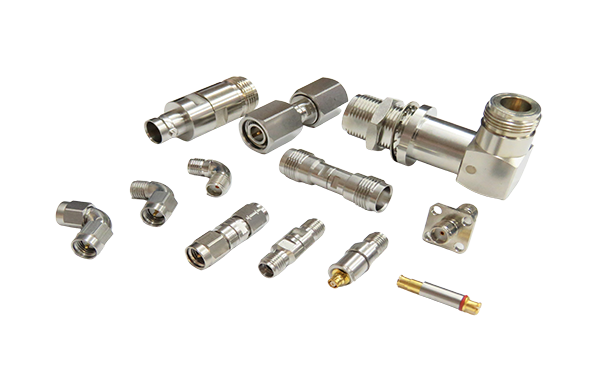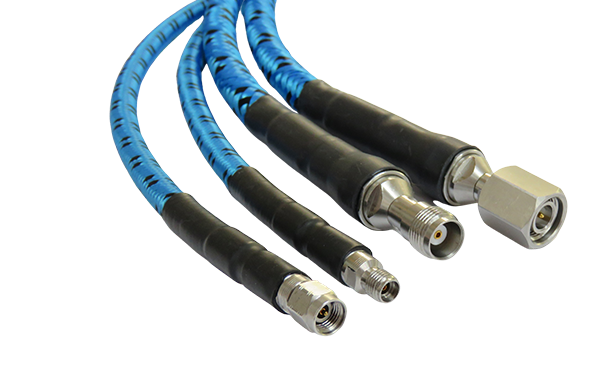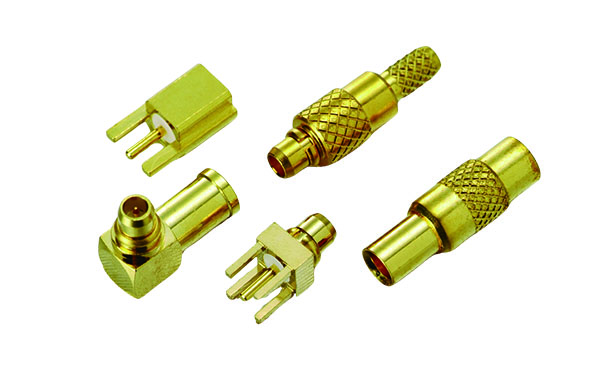- HOME
- Applications
- Blog
- Microwave Components Explained: Why These Little Things Matter BIG Time?
Microwave Components Explained: Why These Little Things Matter BIG Time?
25-06-27
In the fast-paced technological era today, microwave components (MCs) play an important role despite their small size. These seemingly insignificant microwave components are the key to the smooth operation of wireless communications, radar systems, satellite technology, medical equipment, and even everyday smart devices. They are like invisible but indispensable nodes in the technological world, supporting the entire network of information transmission and energy conversion. In this article, we will explore the importance of microwave components, their basic operation principles, and extend the introduction of related technologies and applications. To give you a glimpse of the enormous energy and potential behind these small components.
〈Extended Reading:What is RF Microwave? Mastering Technology Applications and Key Components for More Stable Wireless Communication!〉
What are Microwave Components? How does it Work?
When we take a closer look at the core structure that underpins modern technology, we realize that many of the key strengths come from small but powerful components, such as microwave components, which are used in a wide range of high-tech devices from smartphones to satellite communications, from medical imaging to military radar. These microwave components are used in a wide range of high-tech devices, from smart phones to satellite communications, from medical imaging to military radar, etc. They are inconspicuous, but they are the key to the smooth operation of technological systems.
Microwave components are electronic components designed to process electromagnetic signals in the microwave frequency range (approximately 300 MHz to 300 GHz). Microwave components play a critical role in communication and sensing technologies due to the high frequency nature of microwaves, which can carry large amounts of information and enable long-distance, high-speed signal transmission. Common microwave components include antennas, amplifiers, filters, mixers, couplers, isolators and phase shifters.
The principle of operation for these components revolves around the generation, control, conversion and transmission of electromagnetic waves. For example, amplifiers are used to increase the signal power to overcome degradation during transmission. Filters filter out signals at the desired frequency to eliminate interference. Mixers convert frequency bands by mixing signals of different frequencies to meet signal processing requirements. Each microwave component must be designed with extreme precision to ensure signal integrity and stability in high frequency environments.
〈Extended Reading:Explore Microwave Frequency and Their Applications in RF Microwave Connectors〉
Why are Microwave Components so Important?
Microwave components are the key technology that enables high-speed, stable and accurate signal transmission, which is increasingly required in today's rapidly evolving technology. Although they may be small in size, they have a profound impact on overall system performance. Their importance can be illustrated by the following core aspects.
Frequency Stability
Frequency stability is critical in applications such as radar, communications, and navigation, where any small frequency shift can cause data transmission errors or equipment malfunction. Microwave components, such as oscillators and filters, can control and stabilize the operating frequency to ensure that the system operates accurately in the correct frequency band, thus greatly enhancing reliability.
Signal Quality
Signals that are affected by interference, distortion or noise during transmission can result in data loss or misinterpretation. High quality microwave components, such as low-noise amplifiers (LNAs) or highly selective filters could enhance the signal, reduce noise, and preserve the original waveform characteristics. Thus maintaining the purity and resolvability of the signal.
〈Extended Reading:What is 5G Millimeter Wave? Key Differences and Features Over Regular 5G〉
Power Transfer Efficiency
The efficient transfer of power is a major challenge in high frequency systems. Microwave components, such as power amplifiers and transmission line structures, need to be designed to minimize energy loss and ensure that the energy is not excessively degraded during the transfer process from the source to the receiver. This has a direct impact on the accuracy and performance of radar transmissions, wireless base stations, and even medical therapeutic devices.
Anti-interference
As modern systems are often exposed to multi-signal, complex electromagnetic environments and interference immunity is a necessity. Microwave components such as isolators and directional couplers can suppress reflected waves and external interference also maintain unidirectional and stable signals to ensure that system does not fail due to environmental noise.
Overall, microwave components are not only the tools for signal delivery, but also the gatekeepers of signal quality and performance. They ensure that every piece of information from communications and navigation to medical and defense systems is transmitted accurately, quickly, and safely. It is for this reason that microwave components are regarded as an indispensable core pillar in the field of high frequency technology.
〈Extended Reading:Microwave Communication: The Core Technology of Modern Technology and the Key Role of RF Connectors〉
Common Types and Functions of Microwave Components
Microwave components can be divided into active and passive components. The following is a further introduction to the types and functions of each microwave component.
Active Components:
Active components are those that require an external power source to drive them and can actively adjust or enhance the signal. They usually have the function of amplifying, mixing or generating signals.
Amplifiers
-
Function: To amplify weak microwave signals and increase signal strength to ensure long distance transmission or subsequent processing.
-
Application: Commonly used in wireless transmitters, receivers, and radar systems. Types include Power Amplifier (PA) and Low Noise Amplifier (LNA).
Mixers (Frequency Mixers)
-
Function: Mixes two signals of different frequencies to produce a new combination of frequencies (sum and difference) for frequency conversion.
-
Application: Widely used in wireless communications and receivers to help convert high frequency signals into intermediate frequency (IF) signals that are easier to handle.
〈Extended Reading:SMA to K Connector Explained as the Key RF Component for High Frequency Technology〉
Passive Components:
Passive components do not require an external power source and are mainly used to conduct, select, isolate or transmit signals to maintain signal quality and path control in the overall system.
Filters
-
Function: Filter signals within a specific frequency range, block other unwanted frequencies, and enhance system selectivity and stability. Types of filters include low pass, high pass, band pass and band reject filters.
-
Application: Commonly used to remove noise and avoid interference.
Isolators
-
Function: Allow signals to be transmitted in one direction only, preventing reflected signals from returning and damaging equipment or causing interference.
-
Application: Widely used in transmitters, amplifiers and other components of the protection, to ensure unidirectional stability of the system.
Antennas
-
Function: Converts electrical signals into electromagnetic waves and sends them out, or receives electromagnetic waves from the air and converts them into electrical signals.
-
Application: The key component of all wireless communication devices, from cell phones, Wi-Fi to satellite radar, all rely on antennas
〈Extended Reading:RF Coaxial Connector: A Key Component for Optimizing Microwave Communications〉
How to Choose the Right Microwave Components?
When designing or integrating an efficient and stable microwave system, selecting the right microwave components is a critical step. A good selection will result in smooth operation and optimal performance, while a poor selection may result in signal distortion, unstable performance, or even damage to the device. Therefore, the following considerations must be taken into account when selecting microwave components.
Choose the Right Microwave Components Form
|
Considerations |
Description |
Notes/Suggestions |
|---|---|---|
|
Frequency Range |
Microwave components shall cover or accurately correspond to the required operating frequency band. | Confirm the operating frequency of the component support system (e.g., X-band, Ku-band, etc.) |
|
Application |
Selection of microwave components with the right features for the application. | For example, radar needs high power handling, communication needs low noise, medical needs high stability. |
|
Power Handling |
Components are required to withstand or handle the expected input/output power. |
Pay attention to the power rating when selecting to avoid overloading and causing component damage. |
|
Stablility and |
Stability affects long-term operation. Linearity affects signal distortion. |
High stability components for reliability, high linearity components for precision communication systems. |
|
Insetion Loss and |
The lower the insertion loss, the better. High isolation prevents signal reflection or interference. |
Suitable for use in filters, couplers, isolators, etc. to avoid signal loss or return interference. |
|
Compatibility |
Includes connection interface, impedance matching (e.g. 50Ω) and space configuration requirements. | Smaller systems require consideration of package size and heat dissipation, and connectors need to be compatible with existing designs. |
〈Extended Reading:Explore BMA Connectors and Applications in Microwave Technology〉
Microwave Components Recommendation! Finding the Right Partner is the Key.
With the tenet of "Customer First, Quality First", Huang Liang Technologies has continuously invested in R&D and quality management, and obtained ISO 9001 certification in 2000, demonstrating its persistence and commitment to quality. The main advantages of us are as follows.
Product Diversity and High Quality
Huang Liang Technologies offers a wide range of RF and microwave components, including as follow.
-
RF Connectors: Suitable for various frequency ranges to ensure signal transmission stability.
- RF Adapters: Supporting multiple interfaces to enhance system flexibility.
- RF Cable Assemblies: Provide high quality signal transmission solutions.
- Machining Parts: Satisfy customers' needs for precision and reliability. All products are rigorously tested to ensure that they meet international standards and are suitable for use in military, communications, aerospace and other demanding fields.
〈Extended Reading:Get to Know Multi-Functional of BMAM RF Connectors〉
Customized Solutions and Technical Support
With our professional R&D team, we are able to provide customized products and solutions according to the specific needs of our customers. In addition, we also provide technical consulting and help customers solve their design and application challenges.
〈Extended Reading:How to Choose RF Blind Mating Connectors?〉
Global Service and Fast Delivery
Products related to microwave components are widely used in the global market, and we have established a perfect supply chain management system to ensure the fast delivery of products to meet the customers' time-sensitive requirements.
〈Extended Reading:2.92mm Connectors -The High Frequency Applications for Microwave Field〉
Conclusion
In conclusion, we can see that although microwave components are small, they play an important role in modern technology applications. Whether it is the stable transmission of signals, the accurate control of frequency, or the overall anti-interference ability of the system, the quality and selection of microwave components have a direct impact on the performance and stability of the equipment. Therefore, while it is important to select the right components, it is even more essential to find the right supplier.
As a professional RF microwave connector manufacturer in Taiwan with many years of experience and a complete product line, Huang Liang Technologies focuses on the production of all kinds of high quality RF connectors, adapters and cable assemblies, as well as the provision of customized solutions. Whether you are from communication, aerospace, military, or other high frequency applications, we can provide you with reliable technical support and product choices.
If you would like to know more about our products or services, please feel free to contact us and let our professional team assist you in taking your microwave applications to the next level.
〈Extended Reading:Microwave Technology Principles and Applications〉




